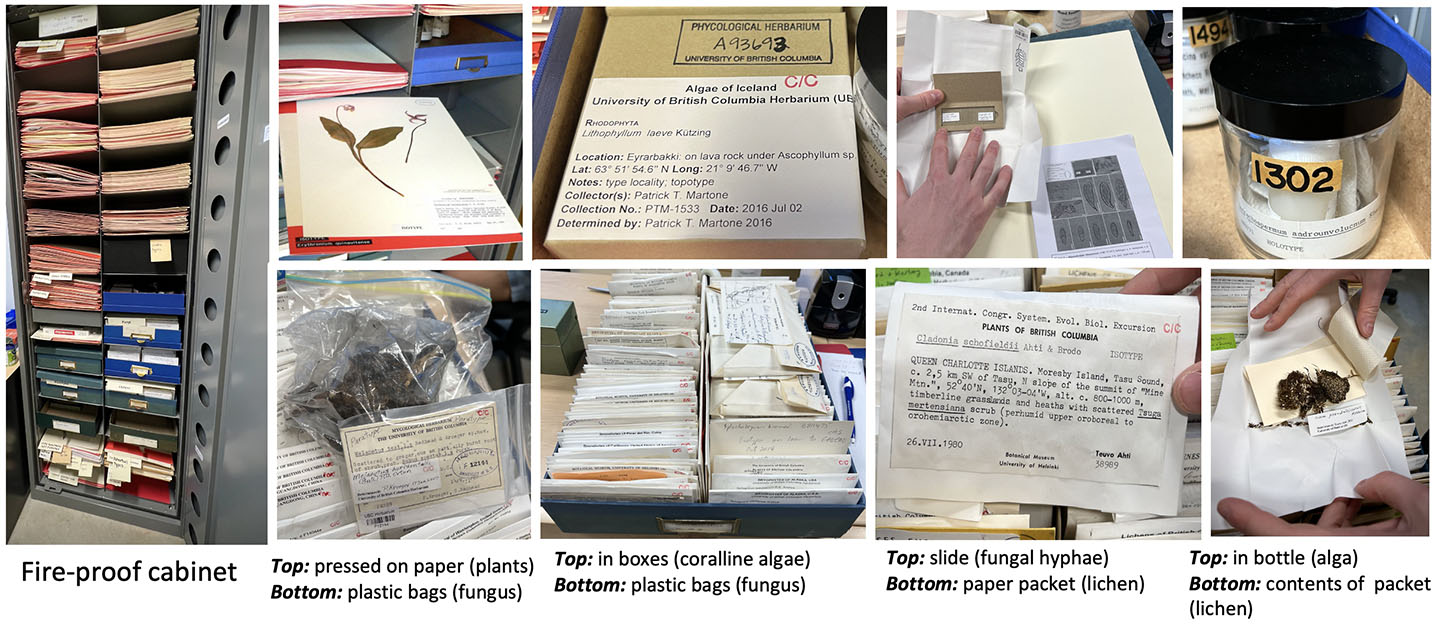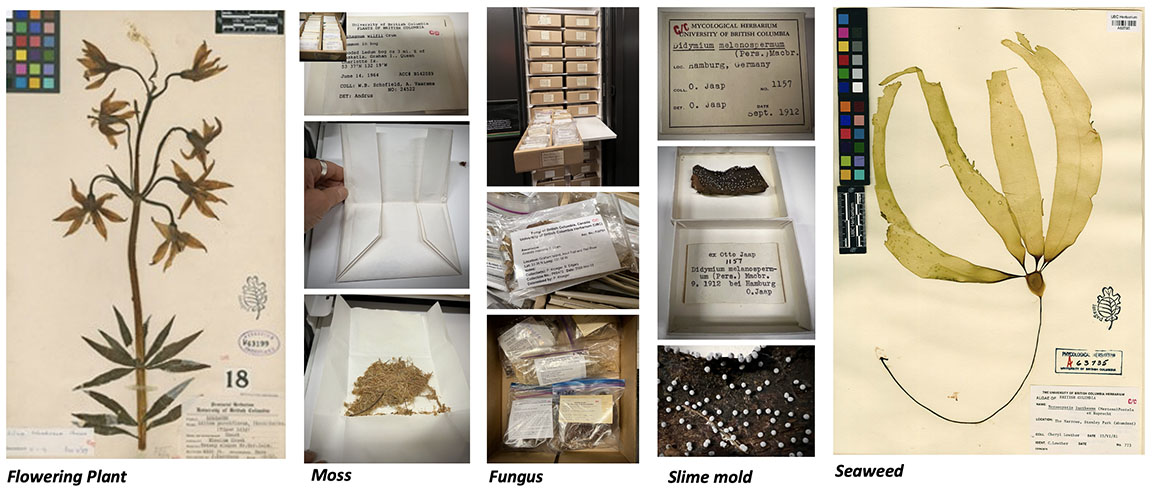
A herbarium (hûr-bâr’ē-əm; from Latin herbārius, one skilled in herbs; plural = herbaria) is a collection of whole and partial plant samples, preserved and labelled that documents the historical and contemporary diversity of a regions flora and are retained by scientific institutes (museums, universities, and botanical gardens).
What Is a Herbarium Specimen?
A herbarium specimen is a permanent sample of a plant, alga or fungus labelled with collection data.
It can be:
- A pressed and dried plant or algae sample mounted on a sheet of special paper.
- Plant or lichen and fungal material stored in paper packets, plastic bags, boxes, and alcohol or other preservatives.
The figure below is a glimpse into the special cabinet in which type specimens are stored….Type specimens are the reference specimens to which a species name has been assigned. It may be the original specimen for which the species name was originally assigned (holotype) or a duplicate of the holotype (isotype). There are a number of other categories of type specimens. The pictures below show the many ways specimens are stored.
Fireproof herbarium cabinet with Type specimens
The UBC Herbarium Collection is a documentation of over a century of biodiversity and research from around the world.

John Davidson, Founder of UBC Herbarium sitting at his desk in British Columbia’s Provincial Botanical Herbarium Offices, ca. 1914.
Why Do We Collect Plant Specimens?
- To provide a historic occurrence record for research and conservation
- To use as a source of information on plant identification, morphology, phenology, and genetics
- To document changes in biodiversity
- To record of collectors and early settlers
- Because it is a fun (and educational) hobby!
We can use herbarium specimens in countless research, for teaching, training, education, outreach, history and art.
Here are 100 Uses for a Herbarium (well at least 72)!
Examples of Herbarium specimens:


